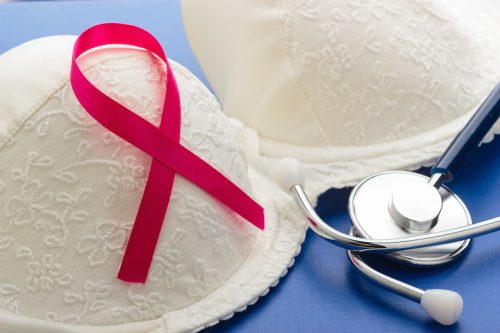FAQ’s About Breast Cancer Related Lymphedema

I recently had a mastectomy/lumpectomy/other cancer-related breast surgery and I now have swelling in my arm. Does that mean I have lymphedema?
This is a question that I hear all the time. The short answer is that if you are about 6 weeks or fewer out of surgery, then swelling is not unusual and is more often than not just post-surgical swelling that can be relieved with lymphatic massage (Manual Lymphatic Drainage).
That does not mean the swelling should be ignored as prolonged swelling backs up the lymphatic system and cause more problems. So, definitely get the post-operative swelling addressed.
If you are more than 6 weeks post-op and you still have swelling in your arm/trunk/breast, then it is best to come in for therapy and be fitted for a compression garment. This is not diagnostic for Breast Cancer Related Lymphedema, but swelling that has not improved at this point is certainly suspicious and needs to be addressed.
If my swelling went down within 6 weeks after surgery even without therapy, does that mean that I won’t get lymphedema?
Unfortunately, there is never a way to know who will and who will not develop breast cancer related lymphedema. Some people develop it right after surgery, while others may develop it 10 or more years later.
That being said, there are factors that make it more likely that lymphedema may develop. These include radiation, chemo, infection, removal of a significant number of lymph nodes, obesity, or subsequent injury to the affected area. The more of these things that you have had done, the higher your likelihood of developing lymphedema. That being said, someone with ALL of these factors may never develop lymphedema – and a person who had simpler procedures such as a lumpectomy and a sentinel node biopsy (1-5 lymph nodes removed) may develop lymphedema. There simply is no way to know who will develop it.
What can I do to monitor myself for lymphedema?
Lymphedema is usually develops slowly over time. The first thing that is often observed by the person who suspects they may have lymphedema is a feeling of heaviness/tightness/fullness in an area such as an arm or hand. If this is true for you, then the recommended course of action is to see a Certified Lymphedema Therapist and be fitted for an appropriate compression garment.
While no one likes the idea of having to wear a compression garment, the worst thing you can do is ignore the signs. Lymphedema never goes away, but it is very manageable if caught early and the person complies with compression and exercise guidelines, as well as watches their weight. (Obesity is a strong contributing factor to the development and worsening of lymphedema.) The pictures you have probably seen on the internet of extreme cases of lymphedema do happen, but they usually happen when people do not attend to the disease – either because they chose to ignore it, or because they went undiagnosed for a long period of time.
Is it true that I can’t lift anything over 15 lbs with the arm on the side of my body where I had lymph nodes removed?
This is a common myth that has circulated for decades. It was initially thought that any use of the arm would cause lymphedema. This has since been shown to be incorrect.
That being said, it is important not to overuse the arm for the first 6 weeks after surgery while healing is taking place. Doing too much during this time can cause inflammation, and could in theory, trigger lymphedema.
Once the first 6 weeks is past, you will want to gently build up to what would be normal usage for you prior to surgery. The key is not to traumatize your arm by doing too much too fast. I tell my clients not to go lifting fridges right away. lol.
So, what if you did weightlifting prior to surgery, or you are interested in getting into weightlifting? Can you do it? The short answer is yes, but it is given with a caution. You should be supervised by a physical or occupational therapist who has lymphedema training so that you don’t do too much too quickly.
For those of you who want some research to prove this, here’s a great study: Effects of aerobic and resistance exercise in breast cancer patients receiving adjuvant chemotherapy: a multicenter randomized controlled trial. Spoiler alert: the incidence of lymphedema was 11% in the group who exercised (under supervision) and was 17% in the group who did not exercise.
Fear of developing lymphedema should not prevent you from exercising, but it should be done with gradually incremented difficulty to avoid trauma to the limb.
If you need a bit more motivation to pursue exercise, remember that exercise helps combat obesity, and obesity is a real risk factor for developing lymphedema.
Do you fit for garments during a session of Manual Lymphatic Drainage?
Yes! I am a certified fitter for compression garments. Just let me know before we begin your session that you would like to receive a fitting so I can allow time for measuring.



